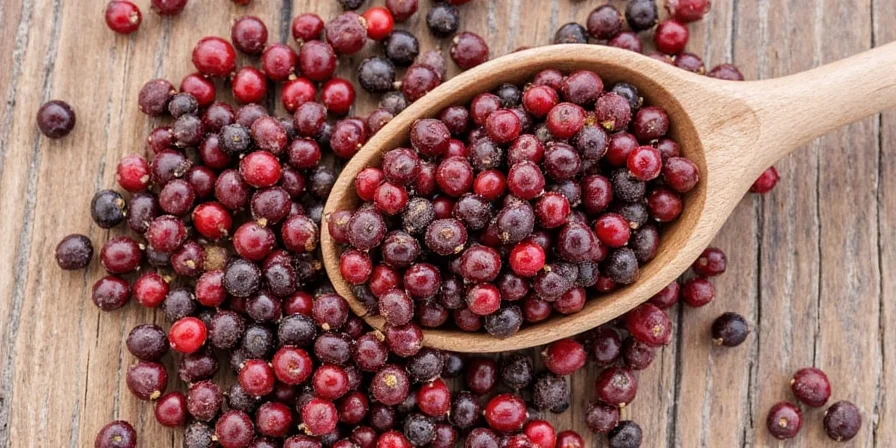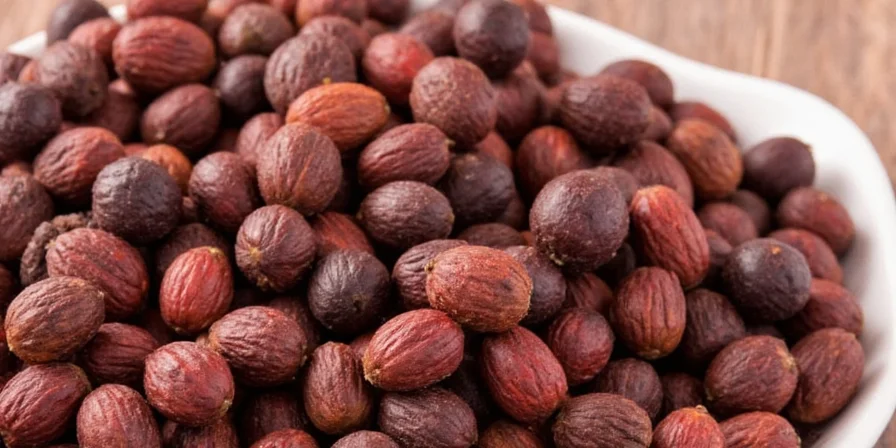Whole allspice berries (Pimenta dioica) are the dried unripe fruit of a tropical tree, not a spice blend as many assume. This single spice delivers complex flavors combining cinnamon, nutmeg, and clove notes. Discover exactly how to use whole allspice berries in cooking, proper storage methods, and why they're superior to ground allspice for authentic flavor development. Whether you're wondering what allspice is used for, how to substitute whole allspice berries, or how long whole allspice lasts, this guide provides immediately actionable answers.
What Is Allspice? The Essential Definition
Allspice, scientifically known as Pimenta dioica, is the dried berry from an evergreen tree native to the Caribbean and Central America. Despite its name suggesting a blend, it's a single spice that naturally combines clove-like warmth, cinnamon sweetness, and subtle peppery notes. The distinctive flavor comes primarily from eugenol (also found in cloves), combined with cinnamic acid and terpenes. Unlike pre-ground versions, whole allspice berries retain their volatile oils longer, delivering more complex flavor when freshly crushed.

Whole Allspice Berries vs Ground: Key Differences
Understanding the difference between whole and ground allspice is crucial for optimal cooking results. Whole berries maintain flavor integrity significantly longer and develop more nuanced notes in slow-cooked dishes. Ground allspice offers immediate flavor release but loses potency faster. Here's how they compare:
| Form | Shelf Life | Flavor Retention | Best Used For |
|---|---|---|---|
| Whole Berries | 3–4 years | Excellent | Infusions, stews, marinades, pickling |
| Ground Allspice | 2–3 years | Fair | Baking, rubs, quick sauces |
How to Use Whole Allspice Berries: Practical Applications
When learning what to do with whole allspice berries, focus on techniques that maximize their flavor potential. Unlike ground versions, whole berries work differently based on when you add them to cooking (early for depth, late for brightness). Here are the most effective uses:
- Infusions: Add 3-5 whole berries to apple cider, red wine, or coffee for warm, aromatic drinks
- Meat Preparation: Crush with garlic, salt, and chili flakes for pork or lamb rubs (authentic Jamaican jerk technique)
- Bean Dishes: Add one berry to lentil soups or baked beans for depth without overpowering
- Pickling: Include in brines for vegetables or cocktail onions (use 2 berries per pint jar)
- Tomato-Based Sauces: Simmer one berry in marinara for subtle umami enhancement
- Rum Infusions: Steep 10 berries in 750ml dark rum for 2 weeks for spiced cocktail base
- Baking: Wrap in cheesecloth for even flavor distribution in cakes and pies

Proper Storage Methods for Maximum Freshness
Knowing how to store whole allspice berries properly extends their shelf life and preserves flavor. Follow these science-backed storage techniques:
- Airtight Containers: Store in glass jars with tight seals away from light and heat sources
- Temperature Control: Pantry storage works for most climates; refrigerate only in humid environments
- Flavor Testing: Crush a berry between fingers - fresh allspice should release strong, complex aroma
- Expiration Signs: Dull gray color or dusty smell indicates loss of volatile oils and potency

Authentic Regional Uses You Won't Find in Standard Guides
Move beyond basic holiday baking with these culturally authentic applications of whole allspice in cooking:
- Jamaican Jerk: Whole berries are essential in traditional pit-smoking as both flavoring and natural preservative
- Lebanese Kibbeh: One berry added to the dough balances lamb's richness without overpowering
- Salvadoran Curtido: Enhances cabbage slaw by cutting through vinegar's acidity
- Swedish Meatballs: Two berries simmered in the sauce provide authentic depth
- Indian Biryani: Adds complexity to rice dishes when combined with cardamom and cloves
Science-Backed Health Benefits (With Proper Context)
Research indicates potential benefits of allspice, though more studies are needed for definitive medical claims. Current evidence suggests:
- Antioxidant Properties: Eugenol content fights free radicals (comparable to other culinary spices)
- Digestive Support: Traditional use for soothing indigestion has some preliminary research backing
- Topical Applications: Diluted essential oil shows mild analgesic properties in laboratory settings

Flavor Comparison: Allspice vs Other Warming Spices
Understanding how allspice compares to other spices helps prevent recipe mistakes. Here's an accurate flavor profile comparison:
| Spice | Primary Flavor Notes | Accurate Substitutes | Culinary Pairings |
|---|---|---|---|
| Allspice | Clovey, cinnamon-like, subtle pepper | 1:1 ratio of cinnamon + nutmeg + pinch cloves | Beef stews, apple desserts, Caribbean dishes |
| Cinnamon | Sweet, woody | 3:1 allspice to cloves | Oatmeal, baked goods, chai |
| Nutmeg | Earthy, sweet | Equal parts allspice and mace | Custards, béchamel, root vegetables |
Answering Your Most Pressing Questions
-
Can I substitute ground allspice for whole berries?
Yes, use ½ teaspoon ground allspice for every 6 whole berries. Whole berries provide more complex flavor development in slow-cooked dishes (simmer 20+ minutes), while ground works better in baking where immediate flavor release is needed. For best results, toast whole berries before grinding them fresh.
-
Why does my allspice taste different from store to store?
Allspice flavor varies significantly by origin. Authentic Jamaican allspice has balanced sweetness and warmth due to volcanic soil and traditional sun-drying. Mexican varieties lean more peppery. Check for 'Pimenta dioica' on packaging to ensure authenticity - some lower-quality products mix other spices. Freshness matters; older berries lose volatile oils that create the distinctive flavor.
-
How long do whole allspice berries last?
Properly stored whole allspice berries maintain peak quality for 3-4 years in airtight containers away from light and heat. Check freshness by crushing a berry - vibrant reddish-brown color and strong aroma indicate freshness. Dull gray color or dusty smell means it's time to replace them.
Practical Implementation Tips
To immediately improve your cooking with whole allspice berries:
- Always toast berries in a dry pan for 1-2 minutes before use to activate flavors
- Use a mortar and pestle for best texture control when crushing
- Add early in cooking for base flavor, or late for brighter notes
- Remove whole berries before serving unless recipe specifies otherwise
- Start with one berry per recipe and adjust to taste - it's potent!












 浙公网安备
33010002000092号
浙公网安备
33010002000092号 浙B2-20120091-4
浙B2-20120091-4